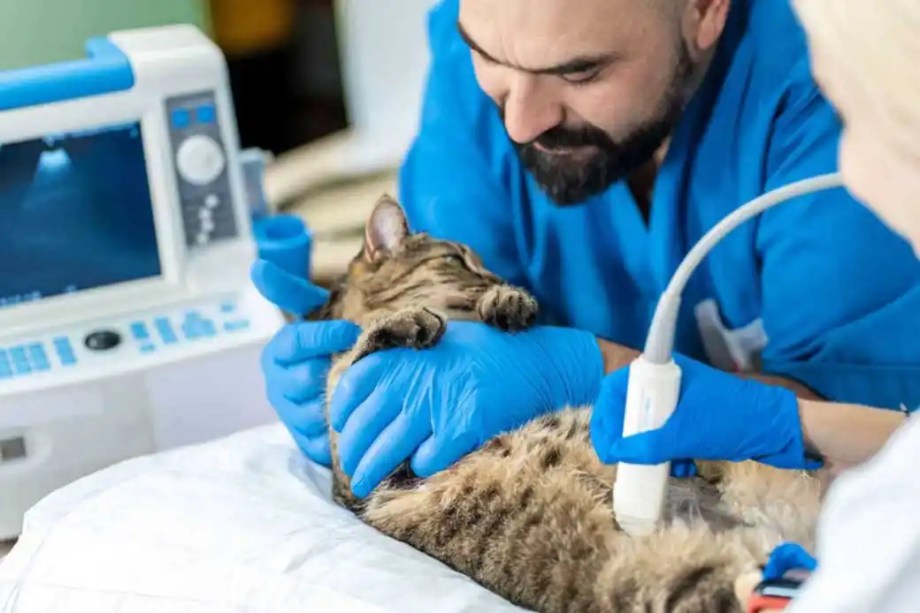
What if I tell you that thyroid disorders also affect pets? Yes, you read that right! If care is not taken, our pets can develop thyroid disorders and disturb their metabolism. Disturbed metabolism means unbalanced hormones; which in turn, can lead to serious health issues. Just like humans, pets can either develop hyperthyroidism or hypothyroidism that requires intervention from Virginia Beach veterinary hospital vets. Both these conditions, though they sound similar, have different effects on the body.
With proper understanding of these two conditions you can detect the early signs and provide appropriate medical treatment to your pet.
In this blog, we will discuss how each of these thyroid types impact animals and how you can manage them.
Hyperthyroidism in Pets: When the Thyroid Works Overtime
In hyperthyroidism, the thyroid gland produces too much thyroid hormone. This form of thyroid is commonly seen in senior and middle-aged cats. As per a report, over 10% of cats aged above 10 years develop hyperthyroidism.
Warning Signs of Hyperthyroidism in Cats
- Increased appetite (but noticeable weight loss)
- Hyperactivity or restlessness
- Frequent vomiting or diarrhea
- Excessive thirst and urination
- Poor coat condition (matted or greasy fur)
- Rapid heart rate
Causes and Diagnosis
Now coming to the cause of hyperthyroidism, it is usually caused due to a benign tumor on the thyroid gland. To determine hyperthyroidism, the vets take blood sample and tests for thyroid levels. Additionally, vets may perform ultrasound or nuclear scan to check for the tumor.
Treatment Options
- Medication: Your veterinarian Virginia Beach VA may put your pet on methimazole drug to suppress the production of thyroid hormone.
- Dietary Management: Diet plays a crucial role in control hyperthyroid. In some cases, vets prescribe low iodine diet to the pets.
- Radioactive Iodine Therapy: Those looking for a permanent treatment could opt for radioactive iodine therapy as works by targeting and destroying the overactive thyroid tissue.
- Surgery: Often vets suggest surgical removal of thyroid gland as a treatment.
Hypothyroidism in Pets: When the Thyroid Slows Down
On the flip side, hypothyroidism occurs when the thyroid gland doesn’t produce enough hormones. This condition is most commonly seen in dogs, particularly in medium to large breeds like Golden Retrievers, Dobermans, and Boxers. Unlike hyperthyroidism in cats, hypothyroidism in dogs is rare in felines.mmmmm
Symptoms of Hypothyroidism in Dogs
- Weight gain without increased appetite
- Lethargy or lack of energy
- Dry, brittle coat with excessive shedding
- Cold intolerance (seeking warm places more often)
- Slow heart rate
- Skin infections or thickened skin
Causes and Diagnosis
Hypothyroidism in dogs is often caused by immune system disorders attacking the thyroid gland or by natural gland atrophy. A vet can confirm the condition with blood tests that measure thyroid hormone levels.
Treatment Options
- Lifelong Medication: Most dogs with hypothyroidism require daily thyroid hormone replacement therapy (levothyroxine).
- Diet and Lifestyle Adjustments: While not a cure, maintaining a healthy weight and regular exercise can help manage symptoms.
The Bottom Line
Thyroid diseases can significantly impact a pet’s quality of life, but with proper diagnosis and treatment, they can live happy, healthy lives. If you notice any unusual changes in your pet’s behavior, weight, or coat condition, consult your veterinarian. Early detection is key to managing both hyperthyroidism and hypothyroidism effectively.












:max_bytes(150000):strip_icc()/Term-Definitions_Digital-Marketing-5ae6ea1aee934b02a94a1a4d9401443d.jpg)

